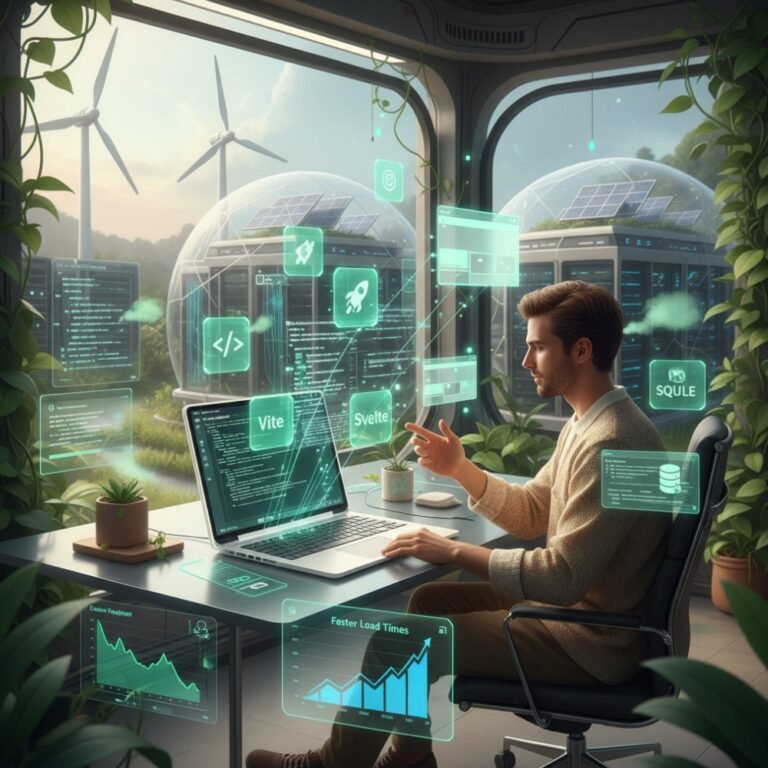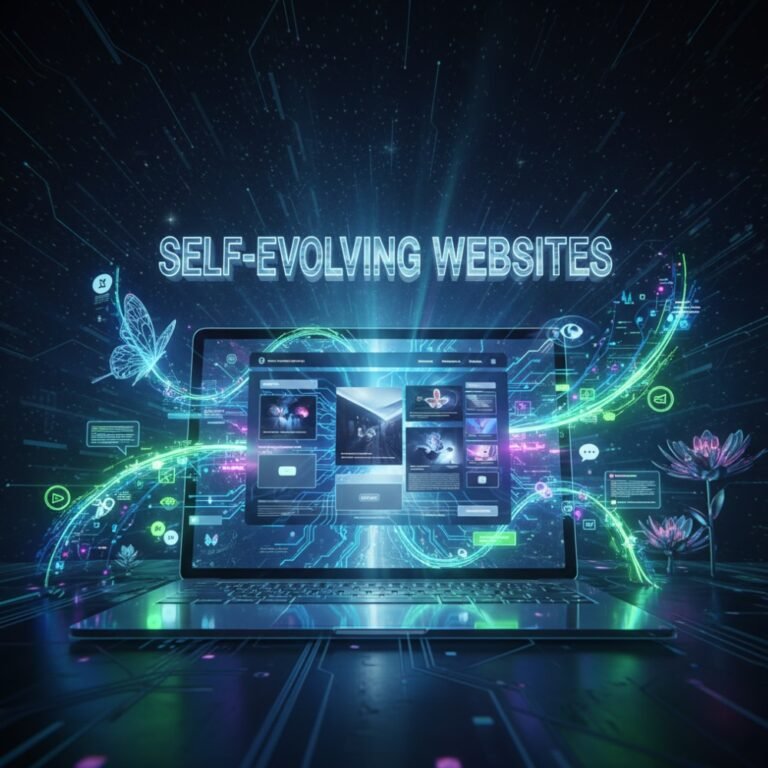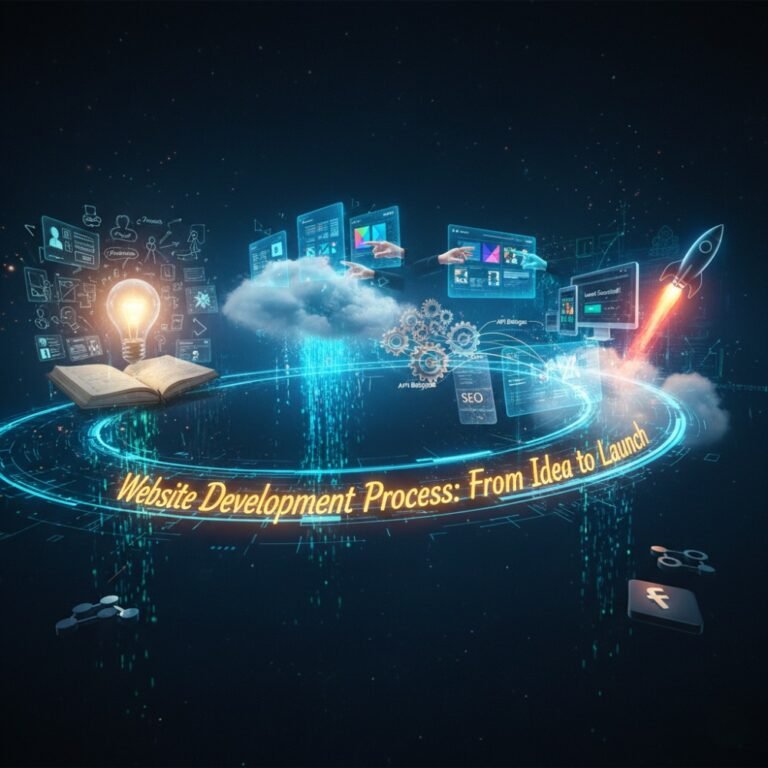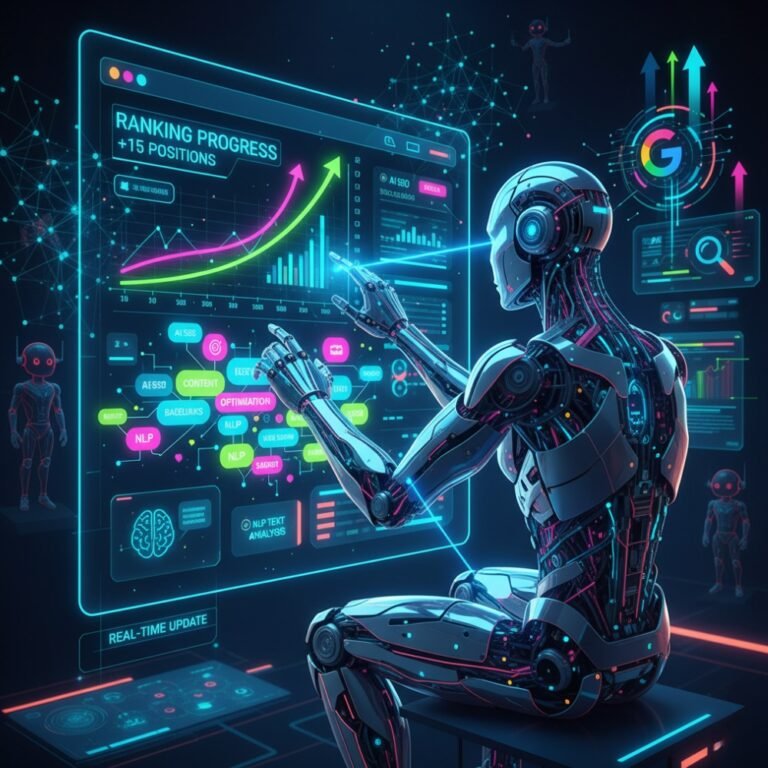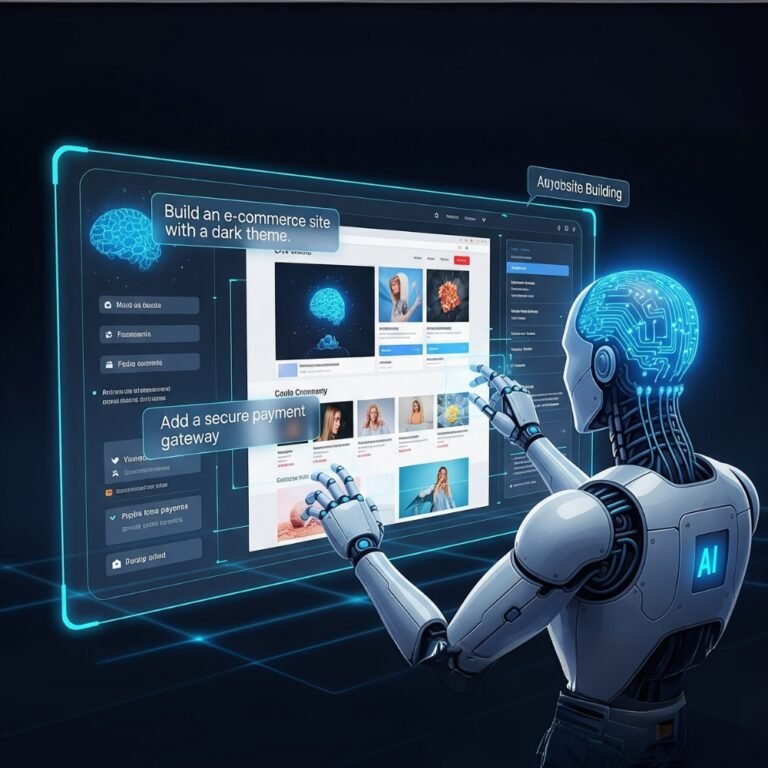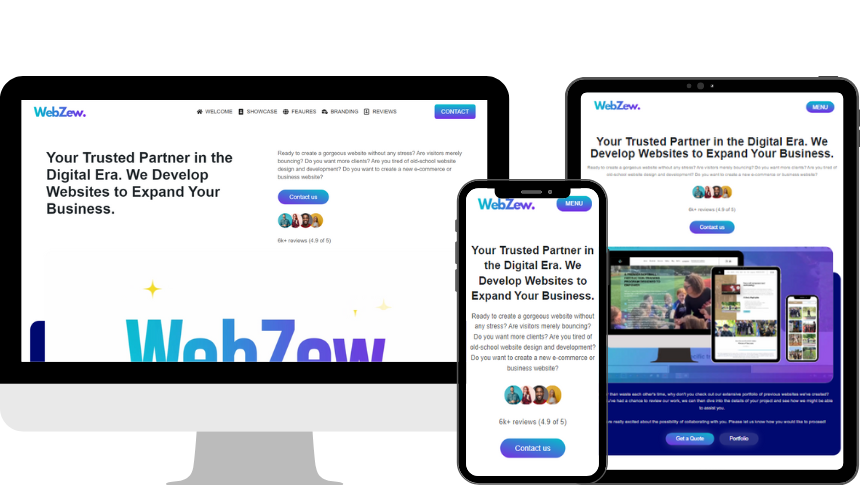Imagine landing on a website that feels like it was built just for you. The layout shifts based on your past visits, the content highlights what you love, and even the colours adapt to your mood or location. This isn’t science fiction—it’s the reality of personalised website design systems powered by autonomous AI web developers. In a world where users demand tailored experiences, static templates are fading fast. But why? And how can businesses keep up?
As a business owner or marketer, you’ve likely wrestled with cookie-cutter websites that fail to engage. Enter autonomous AI web developers: intelligent systems that autonomously craft and adapt sites in real-time. This article dives deep into why personalised design is the future, how it works, and actionable steps to implement it. We’ll explore everything from AI-driven evolution to real-world wins, all while sprinkling in semantic keywords like adaptive web design, dynamic user experiences, and AI personalised websites.
What are Personalized Website Design Systems?
Personalised website design systems are sophisticated frameworks that use data and technology to create unique user experiences. Unlike traditional sites, these systems dynamically adjust elements based on individual preferences, behaviours, and contexts.
Think of them as living organisms. An autonomous AI web developer analyses user data—such as browsing history or device type—and rebuilds the site on the fly. This goes beyond simple A/B testing; it’s about creating a bespoke journey for every visitor.
At their core, these systems integrate AI, machine learning, and user analytics. For instance, an e-commerce site might show vegan recipes to a health-conscious user from London, while suggesting hearty pub fare to someone in rural Scotland. The result? A website that feels intuitive and engaging.
Semantic keywords like real-time web personalisation and user-centric design highlight how these systems prioritise humans over rigid structures. They’re not just tools; they’re the backbone of modern digital strategy.
Why Static Templates are Becoming Outdated
Static templates once ruled the web. They were quick to deploy, cost-effective, and straightforward. But in today’s fast-paced digital landscape, they’re like flip phones in a smartphone era—functional, but limited.
Users now expect relevance. A one-size-fits-all template can’t deliver that. Bounce rates soar when content doesn’t resonate, and conversions plummet. Autonomous AI web developers change this by enabling adaptive designs that evolve with user needs.
Moreover, search engines like Google favour dynamic, user-friendly sites. Static templates often lack the flexibility for SEO optimisations, such as personalised meta tags or content variations. It’s time to say goodbye to outdated rigidity.
Understanding Website Design Evolution
From Static Templates to Dynamic Design Systems
Website design has come a long way. In the early 2000s, static HTML templates were the norm—pre-built pages that looked the same for everyone. They were easy to manage but inflexible.
Enter dynamic design systems. These use databases and scripts to generate content on demand. WordPress plugins kicked this off, but autonomous AI web developers take it further, automating the entire process without human intervention.
For example, a news site might use AI to rearrange articles based on trending topics or user interests. This shift from static to dynamic ensures sites stay fresh and relevant.
The Rise of AI-Driven and Adaptive Website Design
AI is the game-changer. Autonomous AI web developers, like advanced tools from platforms such as Adobe Sensei or custom ML models, learn from data to predict and adapt.
Adaptive website design responds in real-time. If a user lingers on product images, the AI might enlarge visuals or suggest similar items. This isn’t manual coding; it’s autonomous evolution.
Semantic terms like AI adaptive interfaces and machine learning web optimisation underscore this trend. Businesses ignoring it risk falling behind competitors who embrace these technologies.
Limitations of Traditional Templates
Traditional templates have glaring flaws. They’re not scalable—adding features means redesigning from scratch. They ignore user diversity, leading to generic experiences.
Privacy concerns arise too; templates can’t handle nuanced data without add-ons. Plus, they’re vulnerable to obsolescence as web standards evolve. Autonomous AI web developers sidestep these by building self-updating systems.
What Makes a Website “Personalized”?
A personalised website anticipates needs. It’s not just swapping names in emails; it’s reshaping the entire interface.
Key is real-time adaptation. Autonomous AI web developers track mouse movements, click patterns, and session duration to tweak layouts instantly.
Data drives it all. From cookies to anonymised analytics, every interaction informs changes. Imagine a travel site showing beach deals to sun-seekers and ski packages to adventure lovers—all autonomously.
Real-Time Adaptation to User Behaviour
Users behave differently. Some skim, others dive deep. Personalised systems adapt: shortening paragraphs for quick readers or expanding for detail-oriented ones.
An example? Netflix’s interface changes based on viewing habits. Websites can do the same, with AI predicting next clicks.
Data-Driven Design Decisions
Decisions aren’t guesses. Autonomous AI web developers use big data to inform choices, like colour schemes based on cultural preferences or fonts for accessibility.
This ensures inclusivity, boosting user satisfaction.
Personalization Through Demographics, Location, and Preferences
Demographics matter. A site might offer senior discounts to older users or youth trends to millennials.
Location adds magic—local currency, language, or events. Preferences, gathered ethically, refine it further.
Key Components of Personalized Website Design Systems
Building these systems requires core elements. Let’s break them down.
Modular Design Structures (Reusable Components)
Modularity is key. Think Lego blocks: reusable headers, footers, and widgets that AI rearranges.
This allows autonomous AI web developers to mix and match for personalisation without rebuilding.
AI and Machine Learning in Personalization
AI powers the brain. Machine learning algorithms analyse patterns, predicting preferences.
Tools like TensorFlow enable this, creating self-improving systems.
User Journey Mapping & Experience Optimization
Mapping journeys identifies pain points. AI optimises paths, reducing friction.
For instance, shortening checkout for repeat buyers.
Integration of CRM and Customer Data Platforms
CRMs like Salesforce integrate seamlessly, feeding data to AI for deeper personalisation.
This creates a unified view, enhancing loyalty.
Benefits of Personalized Website Design Systems
Why invest? The payoffs are huge.
Higher Engagement & Lower Bounce Rates
Personalised sites keep users longer. Relevant content reduces exits—studies show up to 30% lower bounce rates.
Improved Conversion Rates
Tailored calls-to-action convert better. An AI-driven site might upsell based on cart items, boosting sales by 20-50%.
Enhanced Brand Loyalty and Trust
Users feel valued, fostering trust. Repeat visits skyrocket.
Cost-Effectiveness in the Long Run
Initial setup costs more, but automation saves on maintenance. Autonomous AI web developers handle updates, cutting labour.
Personalization vs. Static Templates
Let’s compare side-by-side.
| Aspect | Personalization (with Autonomous AI Web Developers) | Static Templates |
|---|---|---|
| Flexibility | High—adapts in real-time | Low—fixed structure |
| User Engagement | Boosted by tailored content | Generic, often leads to disinterest |
| Scalability | Excellent—grows with data | Limited—requires manual redesigns |
| Cost Over Time | Lower due to automation | Higher from frequent updates |
| SEO Potential | Strong—dynamic content aids ranking | Weak—static pages limit freshness |
Templates limit growth by stifling innovation. Scaling means cloning sites, not evolving them.
Personalisation boosts ROI through better metrics. A 10% engagement lift can double profits.
Real-World Use Cases
See it in action.
E-Commerce Personalization (Dynamic Product Recommendations)
Amazon thrives on this. Autonomous AI web developers suggest items based on history, increasing basket sizes.
SaaS Dashboards Tailored to User Behaviour
Tools like HubSpot adapt interfaces. Frequent marketers see analytics first; newbies get tutorials.
Content Platforms Adapting to Reader Preferences
The Guardian personalises feeds. AI curates articles, keeping readers hooked.
Local Businesses Customizing Based on Geography
A café chain shows local menus. Location data triggers promotions, driving foot traffic.
Technologies Powering Personalized Website Design
Tech stack is crucial.
AI-Driven CMS Platforms
Platforms like Contentful use AI for content delivery. Autonomous developers integrate ML for auto-optimisation.
Headless CMS and API-Driven Personalization
Headless separates backend from frontend. APIs fetch personalised data, enabling flexibility.
Chatbots and Conversational Interfaces
Bots like those from Drift guide users, personalising based on queries.
Predictive Analytics and Recommendation Engines
Engines like those in Google Cloud predict behaviours, pre-loading content.
Challenges in Implementing Personalized Website Design Systems
Not all smooth sailing.
Data Privacy and GDPR/CCPA Compliance
Balancing personalisation with privacy is key. Use anonymised data and consent tools.
Balancing Personalization with Performance
Over-personalisation slows sites. Optimise AI for speed.
Cost and Technical Expertise Required
Upfront costs deter small businesses. Start small with cloud-based AI.
Future of Personalized Website Design Systems
Looking ahead.
Web 3.0 and Hyper-Personalized Experiences
Decentralised web enables ownership. AI creates ultra-personal spaces.
Role of AR/VR in Personalized Design
AR overlays personalise shopping; VR tours adapt to interests.
Predictive Personalization (Websites that Know You Before You Act)
Autonomous AI web developers will anticipate needs, like pre-filling forms.
Actionable Steps for Businesses
Ready to start?
How to Transition from Templates to Personalized Systems
Audit your site. Identify personalisation opportunities, then migrate gradually.
Choosing the Right Platform or CMS
Opt for AI-ready ones like Sitecore or custom builds with autonomous AI web developers.
Best Practices for Maintaining Personalization Over Time
Monitor analytics. Update AI models regularly and test user feedback.
- Regularly audit data sources for accuracy.
- Train staff on AI tools.
- A/B test personalisations.
- Ensure mobile responsiveness.
- Assess current template limitations.
- Integrate basic AI plugins.
- Collect user data ethically.
- Launch and iterate.
FAQs
What is an autonomous AI web developer?
It’s an AI system that independently designs, adapts, and maintains websites based on data, reducing human input.
How do personalised website design systems improve SEO?
They generate fresh, relevant content, improving dwell time and rankings for terms like dynamic web personalisation.
Are static templates completely obsolete?
Not yet, but for competitive edges, they’re outdated. Small sites might still use them, but growth demands personalisation.
What budget is needed for implementation?
Starts at £5,000 for basic AI integrations, scaling to £50,000+ for full systems.
Can small businesses adopt this?
Yes! Cloud tools make it accessible without massive expertise.
In conclusion, personalised website design systems, fuelled by autonomous AI web developers, mark the end of static templates. They offer dynamic, engaging experiences that drive results. Embrace this shift—your users (and bottom line) will thank you.


